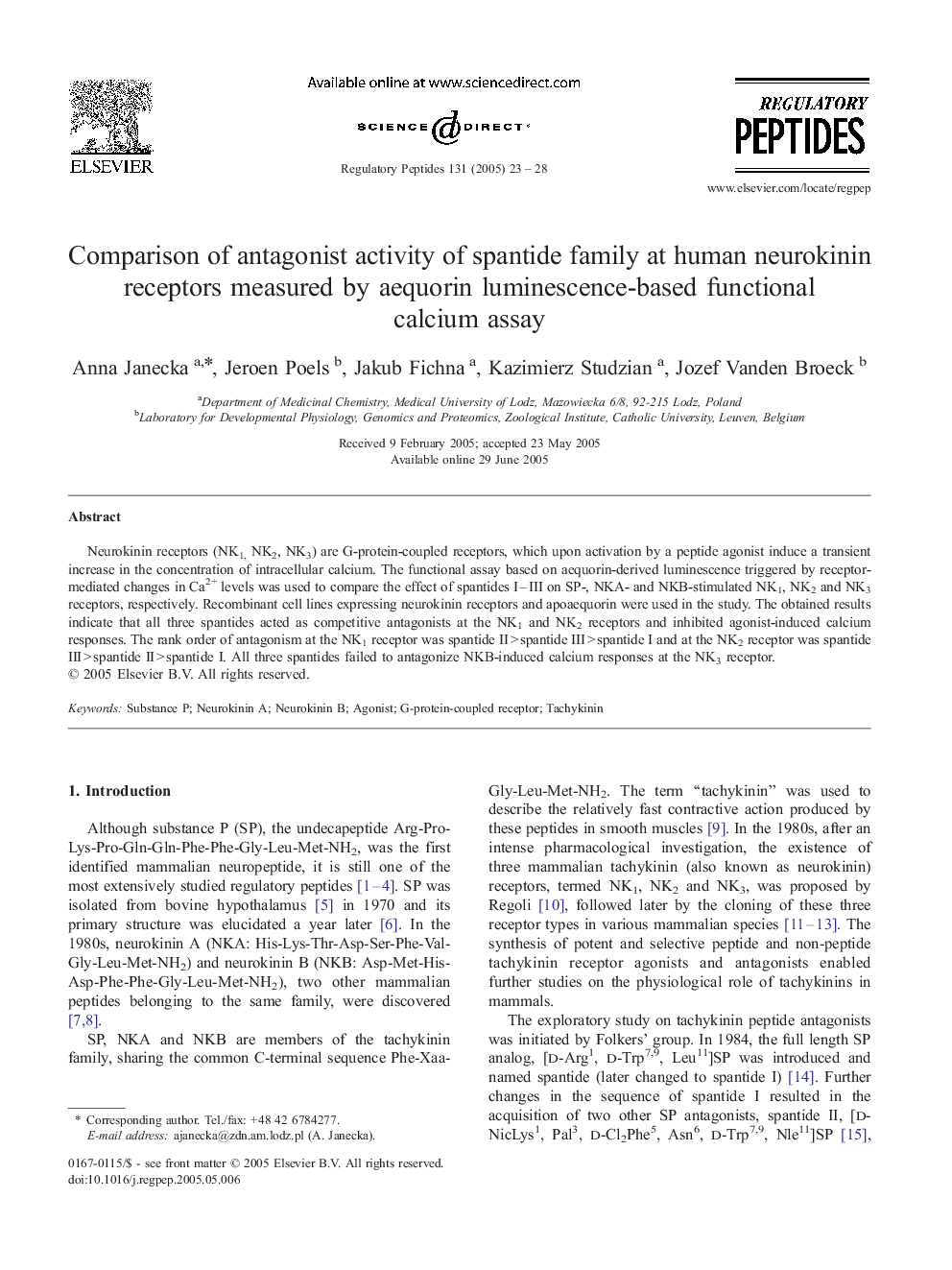| Article ID | Journal | Published Year | Pages | File Type |
|---|---|---|---|---|
| 9894364 | Regulatory Peptides | 2005 | 6 Pages |
Abstract
Neurokinin receptors (NK1, NK2, NK3) are G-protein-coupled receptors, which upon activation by a peptide agonist induce a transient increase in the concentration of intracellular calcium. The functional assay based on aequorin-derived luminescence triggered by receptor-mediated changes in Ca2+ levels was used to compare the effect of spantides I-III on SP-, NKA- and NKB-stimulated NK1, NK2 and NK3 receptors, respectively. Recombinant cell lines expressing neurokinin receptors and apoaequorin were used in the study. The obtained results indicate that all three spantides acted as competitive antagonists at the NK1 and NK2 receptors and inhibited agonist-induced calcium responses. The rank order of antagonism at the NK1 receptor was spantide IIÂ >Â spantide IIIÂ >Â spantide I and at the NK2 receptor was spantide IIIÂ >Â spantide IIÂ >Â spantide I. All three spantides failed to antagonize NKB-induced calcium responses at the NK3 receptor.
Related Topics
Life Sciences
Biochemistry, Genetics and Molecular Biology
Biochemistry
Authors
Anna Janecka, Jeroen Poels, Jakub Fichna, Kazimierz Studzian, Jozef Vanden Broeck,
